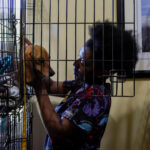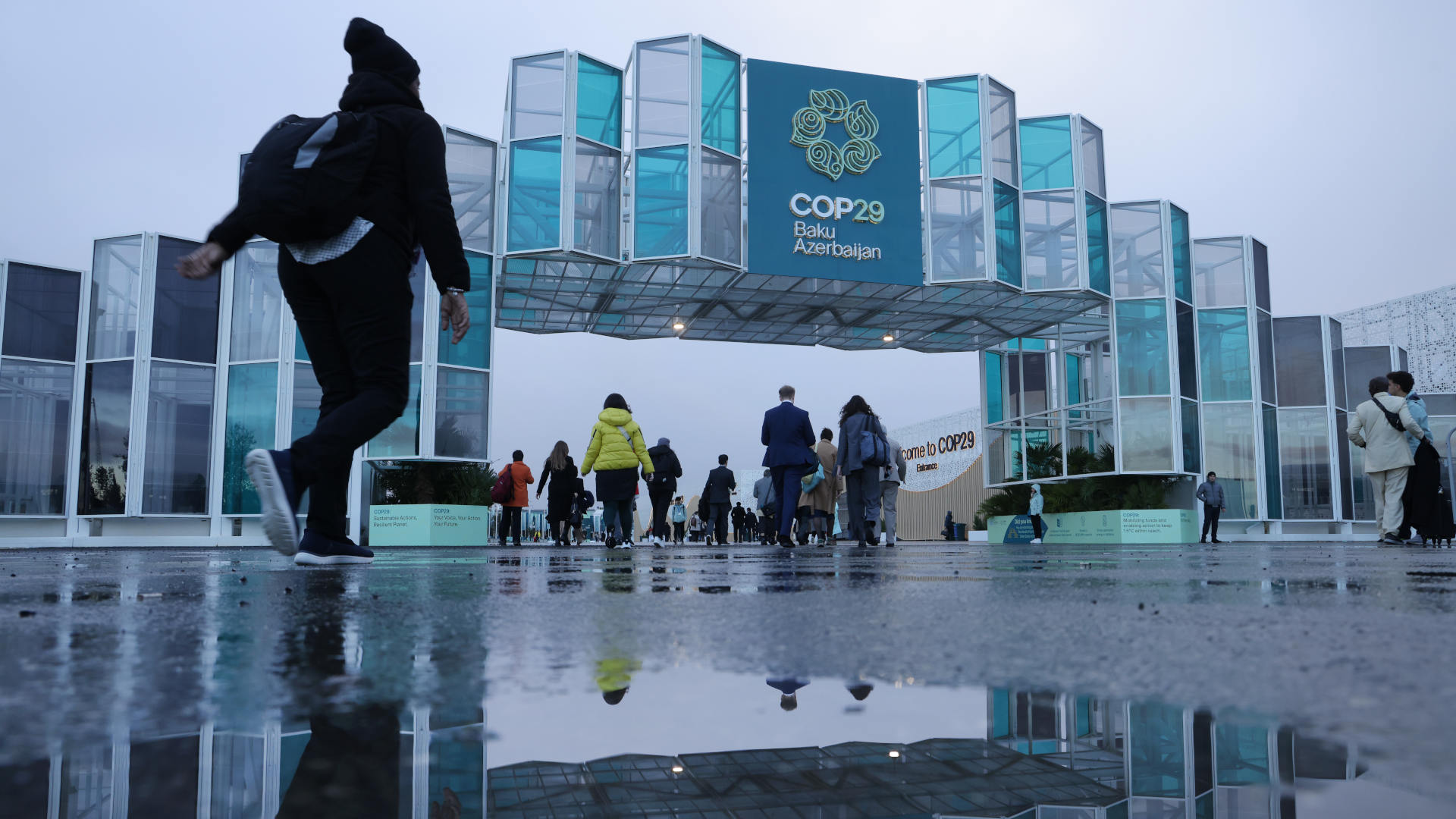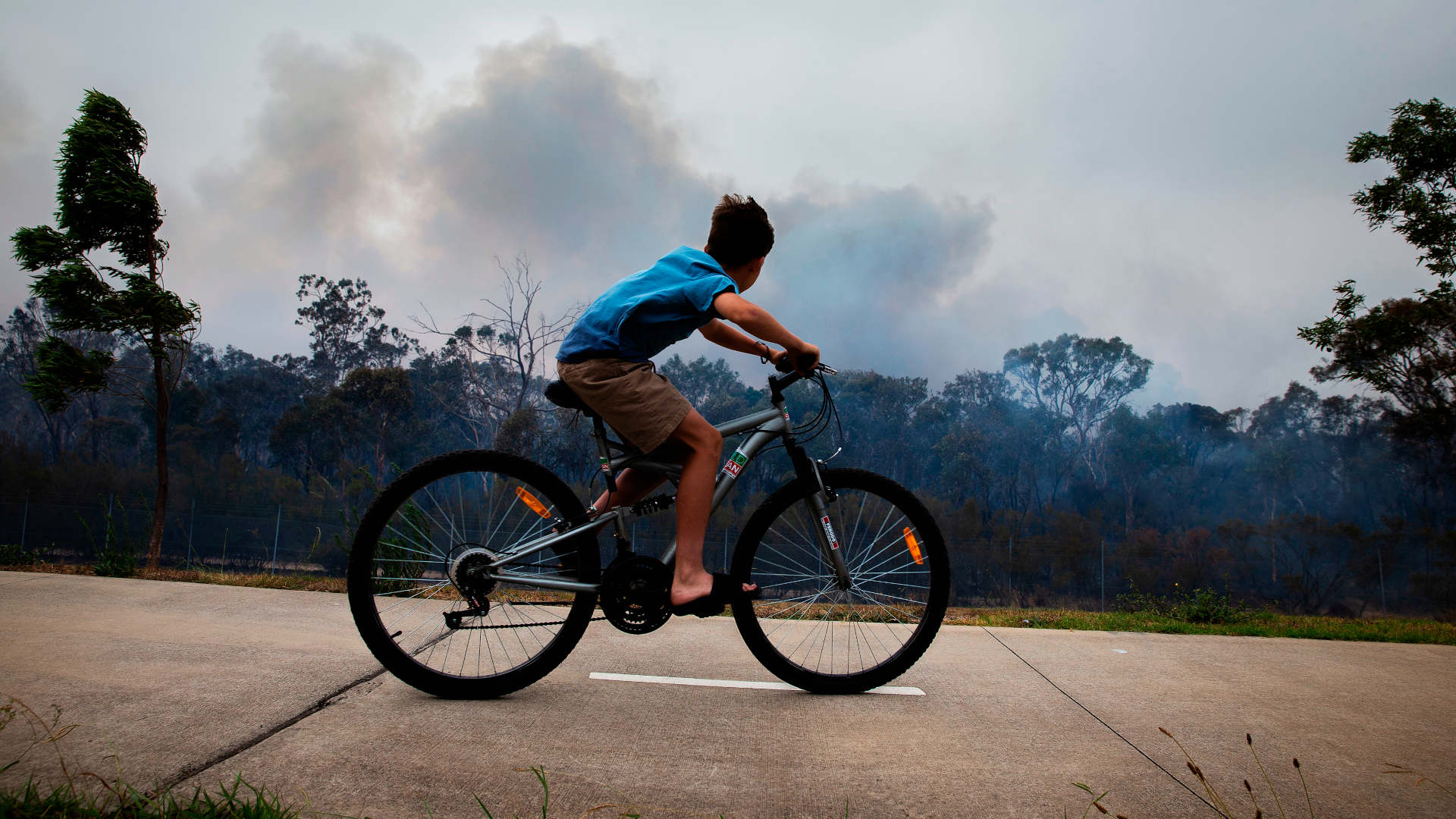The Downsides of a Massive Global Climate Conference
If speeches and slogans could save the climate, COP29 in Baku, Azerbaijan, would already be a success. But there are few signs the current round of climate talks will deliver on the only thing proven to slow global warming: rapid greenhouse gas cuts.
In fact, just ahead of the talks in Baku, COP29 CEO Elnur Soltanov was secretly recorded making plans to wrangle new oil and gas deals during the two-week conference. Last year’s COP28 in Dubai was headed by Sultan Al Jaber, head of ADNOC, the United Arab Emirates’ national oil company. And two years before that, fossil fuel companies paid Glasgow COP26 organizers at least $33 million to sponsor the talks.
This story was originally published by Inside Climate News and is reproduced here as part of the Climate Desk collaboration.
Climate policy experts say conflicts of interest that prevent any real progress on reducing fossil fuel emissions are now baked into the United Nations Framework Convention on Climate Change. The talks have also grown too large and unwieldy, critics complain, and since the beginning, the UNFCCC process has marginalized the concerns of smaller developing countries, Indigenous peoples, and women.
Those same experts also say there are solutions, but that the UNFCCC has put little effort into discussing those glaring problems and is reluctant to take all but the smallest steps to address them.
Each year, those problems are exposed in the weeks and months leading up to the climate talks, eliciting new rounds of outrage and finger-pointing at the UNFCCC, but the process is only as good as what the 198 member countries bring to the table. There is no UNFCCC chief with executive powers who could order changes. The UNFCCC’s role is simply to facilitate the negotiations among its member states.
Any reform efforts would have to be led by the states themselves — most of which seem OK with the status quo.
It’s clear that the annual meetings have grown too big to be effective, said Benito Müller, a researcher at the University of Oxford’s Environmental Change Institute and director of the European Capacity Building Initiative.
“They have grown organically, without any steering. Some people might even say it’s like cancer, out of control,” said Müller, who closely studies the UNFCCC’s annual conferences. “Whenever something new happens once, it becomes a tradition, to be repeated forever. That’s what we have with this bloody summit idea with heads of state attending. Now we have to have it every year and it’s just utter nonsense.”
Less than 5,000 people attended the first few annual conferences, with a spike to about 10,000 in 2007, when the Kyoto Protocol was negotiated in Japan. In 2009, when there were huge expectations for a global climate deal, and ultimately disappointment, in Copenhagen, attendance surged to about 25,000, but then dropped back to 10,000 or less during the next few years before reaching nearly 30,000 in 2015 in Paris.
The next quantum leap came last year in Dubai, where the UNFCCC tallied more than 85,000 attendees. At the COP this year in Baku, the first estimate shows about 52,000 people attending, making it the second-largest Conference of the Parties.
“There should not be big fanfare and whatnot. It’s detrimental to the U.N. process,” Müller said. “We’re going to get climate fatigue.”
Less than 5,000 people attended the first few annual conferences. Last year in Dubai, the UNFCCC tallied more than 85,000 attendees.
Along with ballooning attendance, he said that expectations for the UNFCCC process since the Paris Agreement have also been inflated. The purpose of the negotiations has changed since 2015. The focus now is on implementing the Paris pact to limit the average global temperature increase to less than 2 degrees Celsius (3.6 degrees Fahrenheit) above the pre-industrial level.
“We’re not actually negotiating a treaty,” Müller said. “Now, it’s more accounting.”
But many people think that the delegates are meant to come up with a new silver bullet for the climate crisis each time they meet.
Many long-time observers of the UNFCCC have said that adopting a temperature target rather than a specific goal of cutting emissions may end up being a fatal flaw in the UNFCCC process. It swung the doors wide open for states and other stakeholders who are deeply invested in fossil fuels to flood the climate conversation with shiny but hollow promises and false solutions, including carbon offset programs that often turn out to be scams, and unproven technical approaches like carbon capture and storage, all aimed at perpetuating fossil fuel production and consumption.
“There should not be big fanfare and whatnot. It’s detrimental to the U.N. process. We’re going to get climate fatigue.”
Müller and other researchers analyzed the problems and offered some ideas for improvement in a 2021 report.
“We identified three different types of events going on,” he said. “You have the negotiations, you have the summit, and you have what we call the climate expo.” The path to shrinking the conferences and making them more efficient may be through decentralization, or by separating those three events.
The report suggests holding the actual technical negotiations each year in Bonn, where the capacity is 5,000 participants. The climate expos with their multitude of side events could be rotated through the regions holding the COP presidency each year, and climate summits, which draw world leaders and the biggest number of visitors, could be held only in special years when political leadership and decisions are required.
Reforming the annual climate talks is an open conversation in academic circles, said Cardiff University climate researcher Jennifer Allan, who analyzes the talks for the International Institute for Sustainable Development’s Earth Negotiations Bulletin.
“I think there is interest in the UNFCCC Secretariat as well, in terms of thinking particularly about the size of COPs and how to make them fit for purpose,” she said.
During the UNFCCC’s intersessional meetings in Bonn, the U.S. and some other developed countries have acknowledged that the COPs are too large, she said, and suggested holding them every second year, with technical talks continuing in between.
In recent years, the number of side events has also exploded.
“We’ve seen this huge growth in the global climate action space, which is an attempt to, I think, recreate the mood music from Paris,” she said. But after COP21, she said, the focus should have been on implementation of the Paris Agreement, rather than expanding the annual talks to cover new ground.
Adopting a temperature target swung the doors open for states and other stakeholders who are deeply invested in fossil fuels to flood the climate conversation with shiny but hollow promises and false solutions.
“We also have growing social movements involved. And it’s not just about environmental NGOs anymore, it hasn’t been for 15 years,” she said. “The analogy I use for COPs is they’ve become a coral reef of action, where all sorts of different actors go.”
But the size of the events can disadvantage nations lacking the wealth or infrastructure to support them.
Many COP participants seem to be doing their own thing, Allan added, some of which are far removed from the core purpose of the UNFCCC process.
“At COP18 in Doha, I was chatting with some negotiators who said they had no idea what side events were happening because they did not have the time to walk that far and go there,” she said.
In the early years, by contrast, it was not unusual for negotiators to speak at side events. Now that cross-pollination is breaking down, another driver of the expanding conversation around reform.
Expectations that each annual edition of the climate talks needs to deliver a new climate-saving pact have not been helpful, Allan said.
“One of the wrinkles with the Paris Agreement is that it actually locates almost all action to the national level very explicitly, and that limits what the global process is supposed to do,” she said.
Yet there have been notable advances unforeseen by the negotiators in Paris.
“I used to be one of those people who was very much like, ‘OK, now we just have to implement the Paris Agreement.’ But the loss and damage fund conversation has changed my mind quite a bit because it wasn’t foreseen in the Paris Agreement,” she said, referring to the new funding mechanism established to help developing countries recover from climate impacts. “It came forward as a call from developing countries with remarkable solidarity. And it’s now an important piece of the post-Paris architecture, even though it’s not in the agreement.”
That shows there is still room for new elements to be added to the negotiation space when needed.
“It’s not just implementing what’s written down. We need to have some dynamism there,” Allan said. “But that said, we don’t really need the giant circus. And I think we also need to be quite particular that some COPs, frankly, will matter more than others, based on pressure points built into the process.”
COP30 in Brazil next year is an example of that because the new Nationally Determined Contributions — the targets each nation makes for itself to reign in climate change — are due before the November 2025 summit in Belém.
“There are going to be in-between COPs when there’s no global stocktake, where there’s no new NDCs,” Allan said. “We’re getting stuck in the idea that world leaders always need to be there, but the world leaders are doing nothing most of the time. So let’s only get them in when they can actually provide some leadership. So that may be two COPs out of five.”
“Switching the mode of work, changing size, changing scale, changing the purpose, would send a real message that we’re actually not renegotiating things.”
She said it would also be important to manage the expectations of the host countries, which now all want to “have the biggest and best COP.”
One of the benefits of changing up the size or rhythm of the events could be to remind the world that the basic agreement was already signed in Paris.
“These countries, and individuals, have been negotiating for years and years,” Allan said. “And frankly, what they know how to do is negotiate new stuff. I think switching the mode of work, changing size, changing scale, changing the purpose, would send a real message that we’re actually not renegotiating things.”
Bob Berwyn an Austria-based reporter who has covered climate science and international climate policy for more than a decade.











